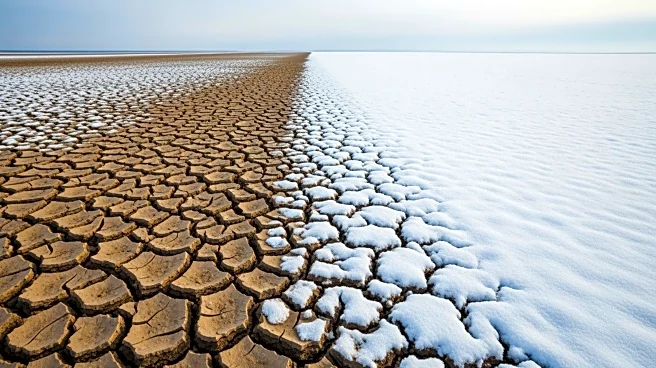What's Happening?
Israel is experiencing an unseasonable heatwave, breaking November temperature records across the country. From the Hula Valley to Eilat, temperatures have soared well above average, with Eilat reaching
37.3°C. Despite the heat, a brief but intense rainfall is forecast for late Monday night into early Tuesday, potentially affecting the northern Negev, lowlands, Samaria, and northern valleys. The rain raises concerns for flooding in lowland cities and parts of the southern coastal plain.
Why It's Important?
The heatwave in Israel highlights the increasing frequency of extreme weather events, which can have significant impacts on agriculture, water resources, and public health. The record temperatures may exacerbate drought conditions, affecting crop yields and water availability. The forecasted rain, while providing temporary relief, poses risks of flooding, which can damage infrastructure and disrupt daily life. These events underscore the need for robust climate adaptation strategies to manage the impacts of extreme weather.
What's Next?
Meteorologists will continue to monitor weather patterns to provide timely updates and warnings. Authorities may need to implement flood prevention measures and ensure emergency services are prepared for potential impacts. Long-term, Israel may need to invest in climate resilience initiatives, including water conservation and infrastructure improvements, to mitigate the effects of extreme weather. Collaboration with international climate experts could provide valuable insights into managing these challenges.
Beyond the Headlines
The heatwave and subsequent rain in Israel reflect broader global climate trends, where extreme weather events are becoming more common. These conditions highlight the importance of international cooperation in addressing climate change, as countries share similar challenges. The situation in Israel may prompt discussions on climate policy and the need for sustainable practices to reduce greenhouse gas emissions and enhance resilience to climate impacts.













